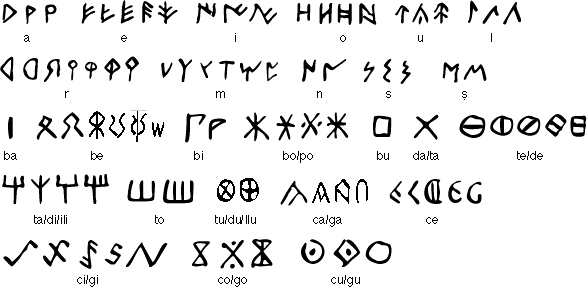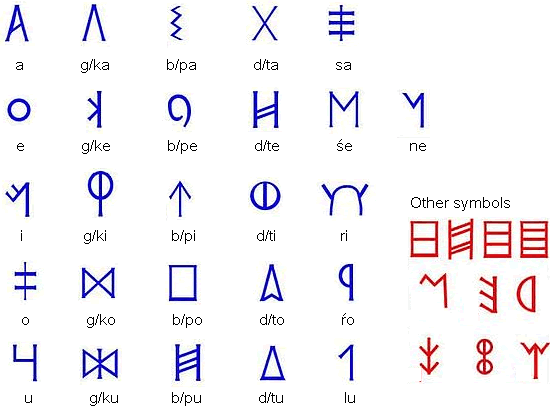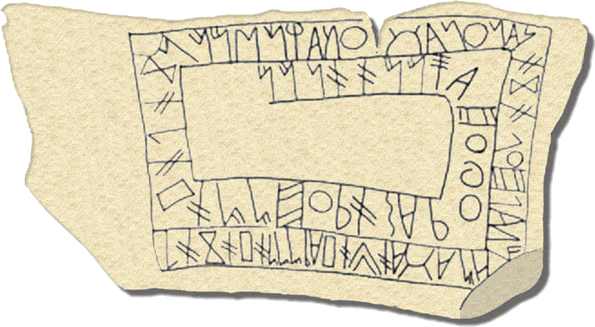Many inscriptions in the Iberian scripts have been found on the Iberian peninsula, in southern France and on the Balearic Islands. The oldest known inscriptions date from the 4th century BC. The scripts are thought to have derived from the Punic alphabet.
In the 3rd century BC the Iberian peninsula was invaded first by Carthage, then by the Romans. Thereafter, the Iberian scripts and the languages they were used to write gradually disappeared.
Iberian, a non-Indo-European language which has so far resisted decipherment, and Lusitanian, an Indo-European language possibly related to the Celtic languages. A modified version of the Northern Iberian script was used to write Celtiberian, a Celtic language. The most recent inscriptions in these language date from the 2nd century AD and they are thought to have become extinct by then.


This Southwest Script was used in southwestern Iberia to write an unknown language which is usually identified as Tartessian. A total of 75 inscriptions in this script dating from between the 7th and 5th centuries BC have been found in the Algarve and southern Alentejo in Portugal, and in southern Extremadura and western Andalucia in Spain. The script is also known as the Southwestern Script, the Southwest Paleohispanic script, the Tartessian Script or the South Lusitanian Script.
The Tartessian language, which is also known as Southwestern or South Lusitanian, is an extinct language that was spoken in the southwestern Iberia. The name Tartessian comes from Tartessos, a city that once stood at mouth of the Guadalquivir River in Andalusia.

Based on information from Rodríguez Ramos, Jesús (2000): «La lectura de las inscripciones sudlusitano-tartesias»

Lead plaque from Ullastret [source]

Lead plaque from La Bastida de les Alcuses (Moixent) [source]

Fonte Velha (Bensafrim, Lagos) [source]
Information about the Iberian scripts and languages
http://en.wikipedia.org/wiki/Iberian_scripts
http://en.wikipedia.org/wiki/Northeastern_Iberian_script
http://en.wikipedia.org/wiki/Southeastern_Iberian_script
http://en.wikipedia.org/wiki/Paleohispanic_languages
http://en.wikipedia.org/wiki/Iberian_language
http://en.wikipedia.org/wiki/Lusitanian_language
http://en.wikipedia.org/wiki/Tartessian_language
https://www.historyireland.com/tartessian-europes-newest-and-oldest-celtic-language/
ALPHABETUM - a Unicode font
for ancient scripts, including Classical & Medieval Latin, Ancient Greek, Etruscan, Oscan, Umbrian, Faliscan, Messapic, Picene, Iberian, Celtiberian, Gothic, Runic, Old & Middle English, Hebrew, Sanskrit, Old Nordic, Ogham, Kharosthi, Glagolitic, Anatolian scripts, Phoenician, Brahmi, Imperial Aramaic, Old Turkic, Old Permic, Ugaritic, Linear B, Phaistos Disc, Meroitic, Coptic, Cypriot and Avestan.
https://www.typofonts.com/alphabetum.html
Breton, Celtiberian, Cornish, Cumbric, Gaulish, Irish, Lepontic, Lusitanian, Manx, Scottish Gaelic, Welsh
Afaka, Bamum, Caroline Island Script, Celtiberian, Cherokee, Cypriot, Dunging (Iban), Eskayan, Hiragana, Iberian, Katakana, Kpelle, Loma, Mende (Kikakui), Mwangwego, Nüshu, Nwagụ Aneke, Vai, Yi, Yugtun
Page last modified: 26.01.24
[top]
You can support this site by Buying Me A Coffee, and if you like what you see on this page, you can use the buttons below to share it with people you know.

If you like this site and find it useful, you can support it by making a donation via PayPal or Patreon, or by contributing in other ways. Omniglot is how I make my living.
Note: all links on this site to Amazon.com, Amazon.co.uk
and Amazon.fr
are affiliate links. This means I earn a commission if you click on any of them and buy something. So by clicking on these links you can help to support this site.
[top]